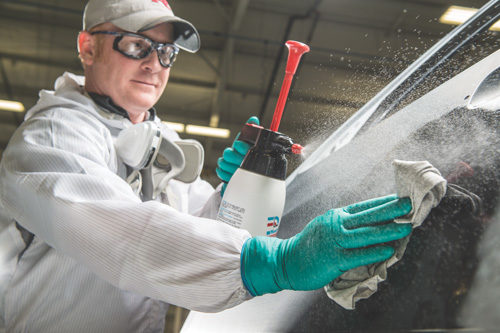Gloves for chemical protection
I’m a safety manager. What factors should I consider when selecting a chemical glove for my workers?

Responding is Chancelor Wyatt, associate director of North American Chemical & Electrician Glove Category Product Portfolio Management, Ansell, Iselin, NJ.
Because there are more than 60 million – and counting – registered chemicals, finding the right gloves for chemical protection is a complicated, difficult process. Finding the right gloves requires a thorough understanding of what chemicals will be encountered, how they’re going to be used and how long the gloves will be exposed to those chemicals.
It’s not as simple as matching glove material to chemical. Workers exposed to chemicals are no different than any others – compliance with personal protective equipment protocols is as dependent on comfort and performance as it is on protection. If the glove doesn’t provide the grip needed, or the fit and feel desired, eventually workers will remove the glove or opt for something more comfortable. Ensuring your selection provides the right balance of comfort, performance and protection is critical to worker productivity, satisfaction and safety.
Furthermore, industry standards help guide glove selection. The European Standardization Organizations recently updated standards related to glove safety. This matters in the United States because one of the standards is being adopted internationally. EN 374 – the previous European standard guiding chemical glove selection – is evolving to become EN ISO 374, becoming the standard in most of the world.
The updates expand the list of commonly used chemicals against which gloves should be tested and provide new guidelines for various levels of chemical resistance. Those guidelines rate gloves based on the number of chemicals against which a glove is effective and the breakthrough time for those chemicals. The updated standards also add requirements for degradation testing and performance. Degradation occurs when a glove is physically compromised due to exposure to a chemical – it becomes cracked or expands or changes in some way that could diminish its protective qualities.
If a glove is degraded in any way, it should not be reused. Dispose of it in conformity with local or state laws. Unfortunately, critical changes to glove material are not always easy to see. And even if the glove isn’t degraded, some chemicals take time to permeate certain materials, meaning even if the chemicals aren’t visible on the glove surface, they may be working their way toward penetration. A worker reusing those gloves could come in contact with the chemical over time.
For that reason, we almost always recommend against reusing gloves. If unavoidable, always consider the total time the gloves spend in contact with chemicals and the total time elapsed after contact. Compare those times against reported permeation times and consider reuse carefully. At a minimum, be sure to thoroughly rinse the outside of the gloves with appropriate rinsing solutions – water for all gloves other than polyvinyl alcohol (PVA); other solvents, such as mineral spirits, kerosene, xylene, perchloroethylene or methylene chloride for PVA gloves. Even after rinsing, always perform a thorough inspection of the gloves for any signs of leaks.
Bottom line: Consult with your glove manufacturer to identify the right gloves for your workers.
Post a comment to this article
Safety+Health welcomes comments that promote respectful dialogue. Please stay on topic. Comments that contain personal attacks, profanity or abusive language – or those aggressively promoting products or services – will be removed. We reserve the right to determine which comments violate our comment policy. (Anonymous comments are welcome; merely skip the “name” field in the comment box. An email address is required but will not be included with your comment.)

